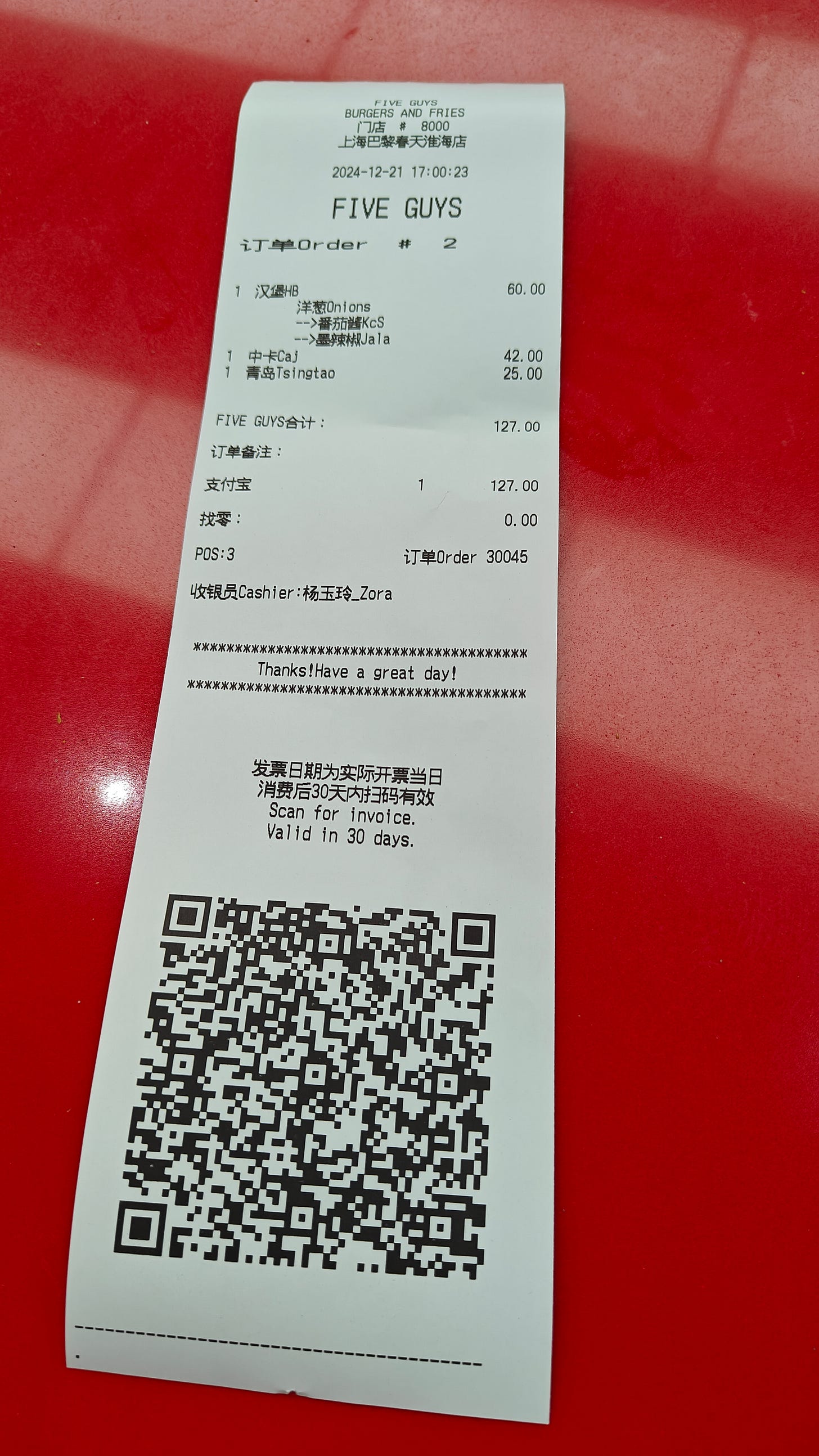Global Digital Marketing & Retail by Alex 80
Inspiration from across the world for retail enthusiasts, e-commerce professionals, marketing lovers and technology fans. Welcome back! I summarized some great links again, I stumbled upon this week.
Good morning, it’s friday again, thank you all for reading, liking and subscribing, and I wish you a great day!
🔍Gemini Deep Research + Notebook LM + Spotify = great | might even be a growth hack

I read somewhere that there are more and more people use Gemini pro and Notebook LM to create podcasts and then get traffic to that via various podcast platforms. Smart idea 😉. Growth hacking actually!
So I now have a paid Gemini account (-otherwise you do not have access to Deep Research-) and gave it a try. It works actually pretty well and is fun to do. You can create a podcast on any (niche) topic with Gemini deep research.
Here's the simple breakdown I used:
Prompt Deep Research: start with a specific topic and feed it to Gemini's Deep Research.
Generate a source file: Let Deep Research compile its findings into a Google Doc.
NotebookLM magic: upload the google doc as a source in NotebookLM. Then, engage in a "conversation" with NotebookLM, essentially creating a dialogue or podcast episode based on the document.
Download & distribute: download the resulting audio file, and you have a personalized podcast ready for distribution on your favorite platforms.
You can even ask NotebookLM in that prompt to promote your newsletter for example, as I did. It works really great.
Interactive mode:
Now notebook LM also has something new. “interactive mode” you can even “break in” to a conversation and ask questions and steer a conversation in a direction you want. I did this in the video below. Unfortunately you cannot record the audio including your “break in” (yet).
Check out the video below.
I've put my Gemini Pro/NotebookLM experiment to the test and uploaded the full podcast on "cultural differences and impacts on web design for e-commerce" to Spotify (made a spotify creator account). You can hear the results for yourself here below!
While the AI-generated content is very nice to listen to, remember that the interactive mode sections, where I actively participated, aren't captured in the current audio recording. That is not yet possible unfortunately, but I am sure that is a feature that will be available in the near future: Imagine that! A podcast with humans and AI combined!
Notebook LM : https://notebooklm.google/
Google Deep Research (paid only): https://gemini.google.com/app
👮AI agents whats the status?
Venturebeat has a good article on AI agents, including a link to the key players on this topic currently.
“The thing that we don’t know is what will be the killer app,” said Sam Witteveen, co-founder of Red Dragon, a company that develops AI agent applications. “My guess is it’s going to be things that just take time on the web that you don’t actually enjoy.” This includes things like going on the web and searching for the cheapest price of a product or booking the best hotel accommodations. More likely it will be used in combination with other tools like Deep Research, where companies can then do even more sophisticated research plus execution of tasks around the web.
The race between established players and innovative startups should drive both technical advancement and competitive pricing, making 2025 a crucial year for enterprise browser-use agent adoption.
The distinction became even clearer in real-world tasks. I asked the agents to book a reservation at a romantic restaurant for noon in Napa, California. Operator approached the task linearly — finding a romantic restaurant first, then checking availability at noon. When no tables were available, it reached a dead end. Proxy showed more sophisticated reasoning by starting with OpenTable to find restaurants that were both romantic and available at the desired time. It even came back with a slightly better rated restaurant.
The pricing pressure is already evident. While OpenAI requires a $200 monthly ChatGPT Pro subscription to access Operator, Convergence offers limited free use (up to five uses per day) and a $20/month unlimited plan. This competitive dynamic should accelerate enterprise adoption, though clear use cases are still emerging.
🇺🇸 Walmart's '24Q4 results
I like marketplaces, so I tend to follow trends there. Walmarts results are out and they are very much promising in general and specificaly for marketplaces.
Number of marketplace sellers who also advertised with its retail media network grew by 50% YoY
24% YoY increase in U.S. advertising sales
U.S. marketplace revenue grew 37%.
50,000 Marketplace sellers (more and more Chinese by the way)
20% growth in its U.S. e-commerce sales That far outpaced the retailer’s overall U.S. comp sales growth of 4.6%.
Global advertising business grew 27% to $4.4 billion. (very interesting is also there walmart connect, retail media posssibilities)
“We’re making good progress on expanding the number of U.S. marketplace sellers that also utilize Walmart Connect advertising,” Walmart CFO John David Rainey said during the company’s fourth-quarter earnings call. The company’s overall U.S. advertising sales increased 24% year over year, and U.S. marketplace revenue grew 37%.
“I think all brands will need to have some type of presence on both [marketplaces],” Haire said, adding, “I do think the pendulum is starting to swing, and maybe people are just getting fed up with Amazon,” pointing to increases in fees that have driven some sellers to look elsewhere.
More third-party sellers on Walmart’s website increases the need for each individual seller to pay for visibility and exposure, said retail media analyst Andrew Lipsman of Media, Ads + Commerce. “As more brands have to compete for any individual search term, that also pushes monetization up over time,” Lipsman said. “That’s a way of winning mind share if your brand, especially, is not a household name.”
Details on WalMart connect: https://www.walmartconnect.com/
🇨🇳 QR code on a receipt in China made me creative
Last time I was in Shanghai, when I was on my way to the airport, I always stop at Shaanxi Nan Lu, one of my favorite areas of Shanghai (can fully recommend it) to think about how my holiday was and to visit one last more bar or restaurant. This time I was in a hurry -the bar I wanted to go to was closed-, so I combined it all at “five guys” as it is close to the metro and they have beer and they are not so ridicoulusly expensive in China as in the West.
But what I want to share is this receipt with QR code for invoice. This QR code visibility, is related to the Fapio tax system in China (I won’t go into that it’s a much longer story) I just wanted to share it as I like fintech and customer experience and this is something that can be used beyond a Fapio.
You see here I paid with Alipay (indicated) and by scanning the QR I go to a digital invoice within the Alipay app, but also withouth scanning I can find it in my Alipay wallet. While the QR code and Alipay integration are primarily designed for fapiao , the underlying technology and user experience offer convenience even if the focus wasn't solely on tax invoices.
A little brainstorm with myself on the convenience beyond fapio
Digital Record Keeping: Even without needing a fapiao, the QR code and Alipay system provide a digital record of the transaction. This is so useful for:
Personal Expense Tracking: Track their spending within Alipay, categorized by merchant and date.
Warranty or return purposes: the digital receipt serves as proof of purchase, making it easier to claim warranties or process returns without needing to keep physical receipts.
Reimbursements: Even if not for official tax purposes, the digital record can be shared as proof of purchase for informal reimbursements (e.g., expenses shared among friends or colleagues).
Reduced Paper Clutter
Easy Access and Search: Stored receipts within Alipay are easily accessible and searchable.
So again something were we can learn from in the West from China both in features and experience (and I do not mean the fapio system itself)
😦AI shopping assistants: what are peoples concerns?
If you build an AI assistant or actively use AI in customer touchpoints, do take into account these concerns as cited in this research (linked below):
AI’s handling of personal customer data (58%).
AI feels more like an upselling tool than an assistant (42%).
Lack of human support in customer service (40%).
Privacy concerns (37%).
Lack of trust in providing a company with personal customer data (28%).
Inaccurate recommendations (21%).
Details: https://chainstoreage.com/survey-shoppers-not-sold-ai-shopping-assistants
🇦🇺 The power of creativity over message frequency
I like it when companies try and do things differently. More the growth hack style. This is such an example. Usually marketing departments look at frequency to “plant a a message” but this campaign is different.The Australian Lamb campaign, run annually by MLA since 2005, is a perfect example of creativity to drive impact rather than repetitive messaging. This ad launched January 7, 2025, titled "The Comments Section," uses real online comments to humorously unite Australians over lamb.
For more out of the box approaches, read my recent newsletter on “category claiming”:
There you will read on the “lightning strike model, a model that prioritizes making a big impact within a short timeframe, rather than spreading marketing efforts thinly throughout the year. Also very interesting to dive into in my opinion.
🏭Fletch: positioning B2B vs B2C
The guys from Fletch have uploaded a couple of new infographics, I want to highlight this one below. While it is focused at B2B SaaS software, I think it is valid also outside this category.
B2C brand association: emotion over function:
Consumer brands heavily invest in building mental associations with abstract concepts (adventure, safety) for products like shoes and cars for example.
B2B: category ownership first, abstract association second:
While B2C focuses on emotional association, B2B software success comes mostly from a clear association with specific workflows.
All B2B software is workflow software.
Prioritize workflow brand association:
In B2B, establish a strong mental connection between your software and the core workflows it supports.
It is more effective to claim a category than to attempt to build an abstract mental association.
The pitfalls of premature abstract branding:
B2B rebranding based on abstract concepts is often flawed if you haven't first established your category or workflow relevance.
Assess your B2B brand's clarity:
Can customers instantly associate your brand with a defined category or workflow?
A lack of clear, functional brand association can lead to significant market challenges.
🤓3 levels of customer knowledge
Most companies stop indeed at level 1 and very few might go to level 2, but level 3 isn’t reached by many and I think level 3 can even enriched by diving into which websites or magazines they read, how frequently, etc, a bit what sparktoro does. Imagine what happened if we all did that!
Via: Pierre
That’s it for today, I hope you liked it, I enjoyed writing it. Thank you for liking and subscribing.
Listen to this newsletter via Spotify
You want to listen to this newsletter? I have created a summary via NotebookLM and uploaded it to spotify
Curious for more?
Check out my archive of all previous newsletters:







